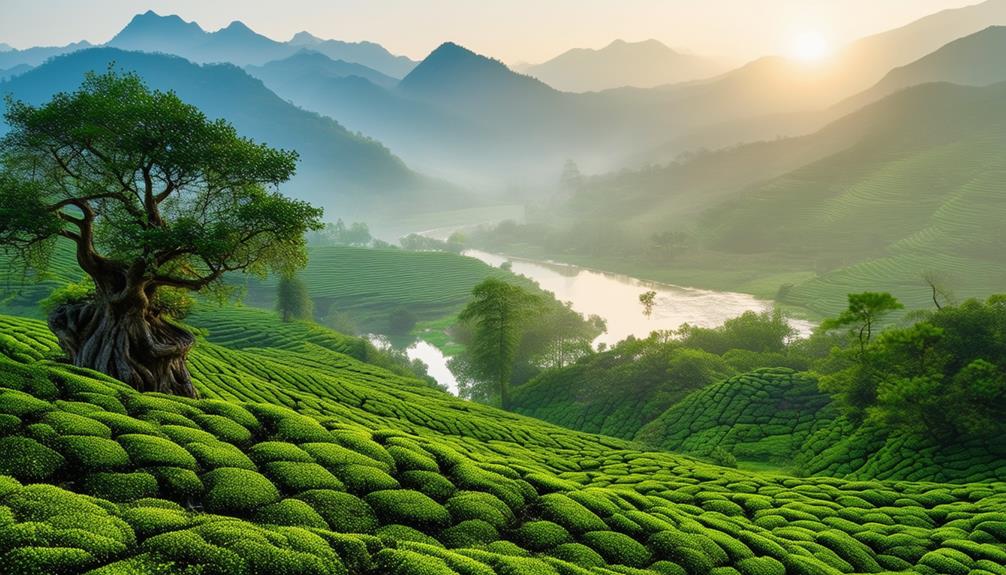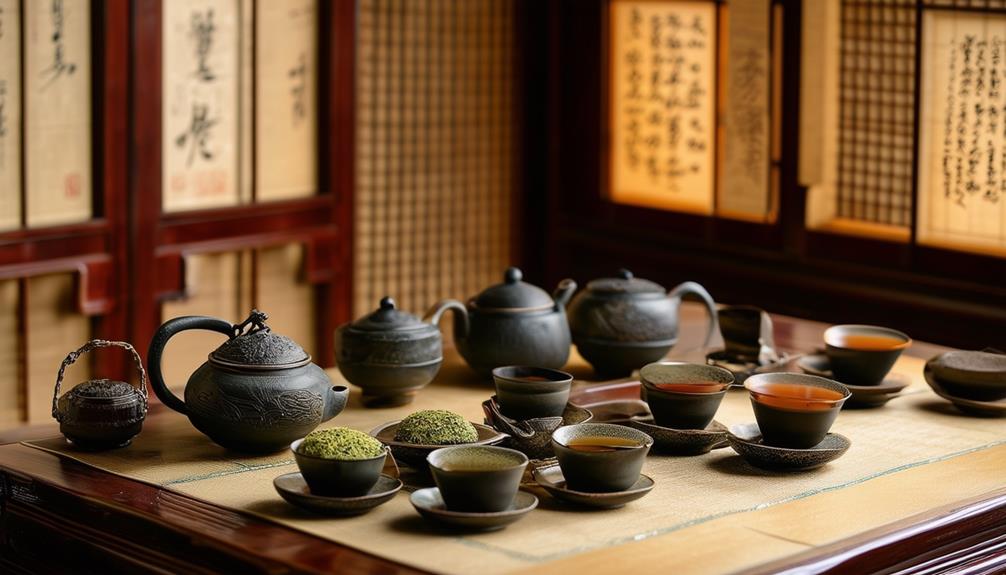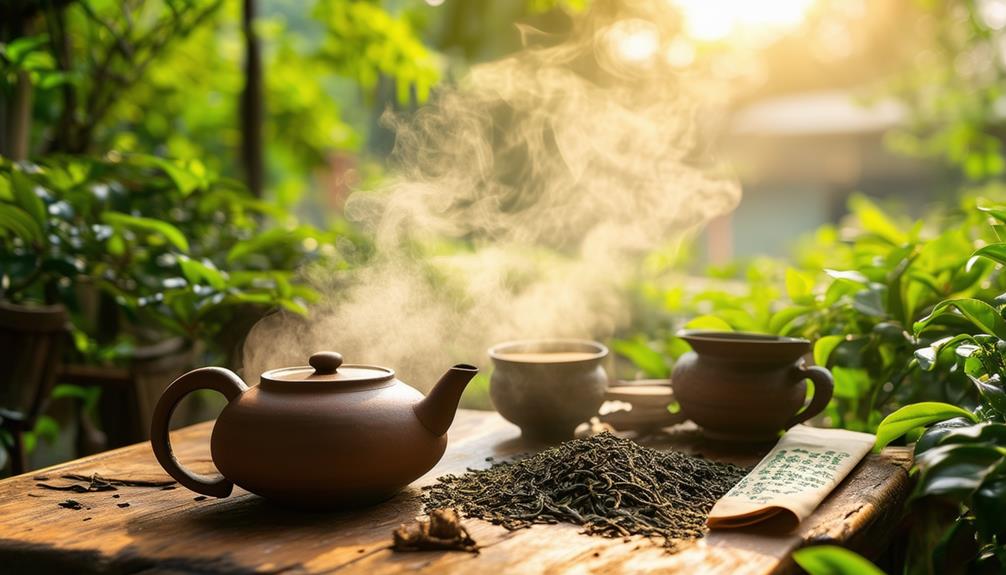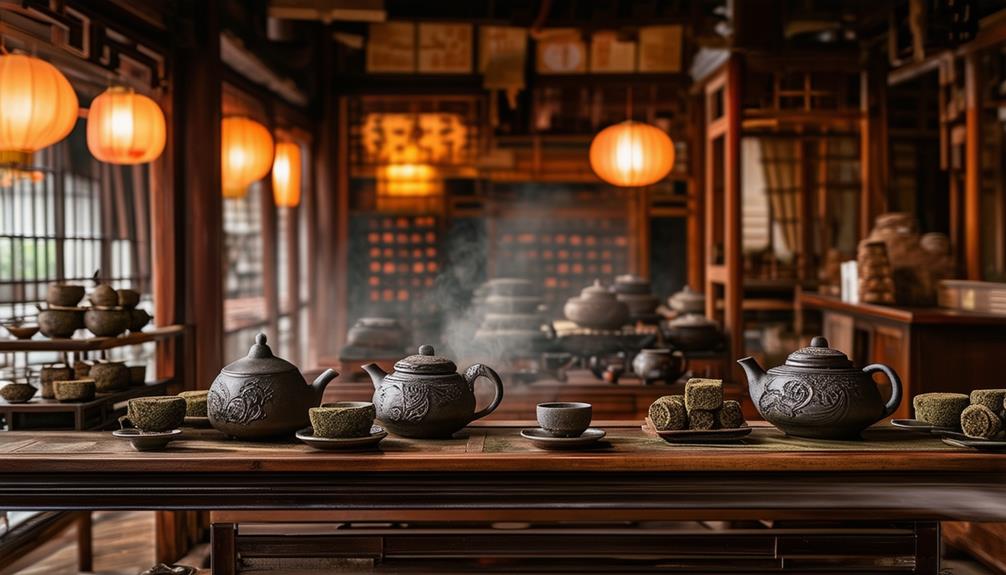Aged tea, particularly Puerh, encapsulates centuries of tradition and meticulous craftsmanship in every cup. Originating from Yunnan, China, Puerh offers more than just a beverage; it serves as a window into ancient customs and beliefs. This tea undergoes a unique fermentation and aging process, developing complex flavors that captivate connoisseurs worldwide. Beyond its taste, aged tea embodies a rich cultural heritage and significant health benefits. Curious about how a simple leaf transforms into a highly sought-after collectible? Join us as we explore the fascinating journey of aged tea and its global impact.
Origins of Puerh Tea

The origins of Puerh tea trace back to Yunnan, China, where ethnic minorities have perfected traditional post-fermentation techniques over centuries. Yunnan is renowned for its diverse ethnic groups, each contributing unique methods to the world of Puerh tea. These traditional practices have been meticulously preserved and passed down through generations, ensuring the rich flavors and distinctive qualities of Puerh tea remain intact.
One notable ethnic group, the Bulang, has significantly influenced the development of Puerh tea. Their expertise in making Suan Cha, a type of fermented tea, demonstrates their deep understanding of fermentation processes. These ancestral practices have helped create a diverse range of aged Puerh teas, celebrated for their complexity and depth.
Additionally, traditional methods of tea transportation and packaging have played crucial roles in Puerh tea’s development. These techniques not only preserved the tea but also inadvertently influenced its fermentation, enhancing its flavor profile over time. Visitors to Yunnan’s tea shops will find a tribute to the cultural significance and meticulous craftsmanship of the ethnic minorities. Their dedication to preserving traditional practices has made Puerh tea a cherished and sought-after delicacy worldwide.
Fermentation and Aging Process
Understanding the rich flavors of Puerh tea begins with its fermentation and aging process. The fermentation involves microbial activity that transforms the leaves over time, creating deep, complex flavors. This natural aging process can take 15-20 years to fully develop the tea’s desired profile. To meet rising demand, accelerated fermentation methods like ‘wo dui’ or wet piling are used. This technique speeds up maturation, producing ripened tea with a rich, earthy taste.
In the ‘wo dui’ method, tea leaves are piled, moistened, and covered to encourage microbial growth, simulating natural aging but in a shorter time. While efficient, the appeal of Puerh tea often lies in its authentic aging. Naturally aged Puerh, matured over decades, offers a more nuanced flavor that’s hard to replicate.
Due to its popularity, the market has seen an influx of counterfeit Puerh. Understanding these processes helps you appreciate the authenticity and craftsmanship behind each cup of aged Puerh, ensuring you savor a truly exceptional brew.
Cultural Significance

Mature tea holds profound cultural value, often tied to ancient traditions and rituals. Sharing a pot of Pu’er tea, for example, is not merely about savoring its flavor; it is about participating in a time-honored social custom. These practices reflect a deep appreciation for history and craftsmanship.
Ancient Tea Traditions
Ancient tea traditions in Yunnan, especially the aging process of Puerh tea, provide a captivating insight into the cultural practices of ethnic minorities in the region. These communities have meticulously preserved the methods of aging Puerh tea over generations, making it an integral part of their cultural heritage. The unique post-fermentation process of Puerh tea adds layers of complexity and depth, showcasing the meticulous craftsmanship of these ethnic groups.
The consumption and culinary applications of aged Puerh tea are deeply interwoven with traditional knowledge, making it more than just a beverage but a cultural artifact that highlights the importance of tea in various cultural practices. As it ages, Puerh tea evolves, embodying the customs and beliefs integral to Chinese culture.
Historically, transportation conditions have significantly influenced the flavor and quality of aged Puerh, adding another dimension to its storied history. Delving into these ancient practices reveals the mystery and allure that make aged teas, like Puerh, so enchanting. The traditional post-fermentation techniques confirm the rich, enduring legacy of Yunnan’s tea culture.
Rituals and Social Customs
How does the ritual of brewing and sharing matured Pu’er tea enrich its cultural significance in Chinese society? It begins with the meticulous customs and etiquette that define Chinese tea ceremonies. When you brew and share aged Pu’er tea, you’re not just making a beverage; you’re partaking in a tradition that symbolizes hospitality and friendship. These rituals are often held in traditional tea houses, where the ambiance enhances the meditative and communal experience.
Chinese tea ceremonies involving Pu’er tea are revered for their detailed etiquette. For example, the water temperature, steeping time, and even the way the tea is poured follow specific customs passed down through generations. This attention to detail transforms the simple act of drinking tea into a profound cultural event.
Sharing aged Pu’er tea with friends and family isn’t just about enjoying a fine drink; it’s about strengthening social bonds. The aged tea serves as a medium for connection, fostering a sense of community and belonging. In Chinese culture, these rituals are a way to show respect and build relationships, making Pu’er tea ceremonies much more than just a drink—they’re a cultural cornerstone.
Global Spread and Trends
Tea’s global journey has seen it spread to 48 countries, becoming the third most consumed drink worldwide. Originating from the ancient tea regions of Yunnan and Sichuan in China, tea has evolved from a local commodity to a global staple. The Pu’er tea market, deeply rooted in Chinese tea traditions, has experienced significant growth and fluctuations, including a dramatic crash in 2008 that impacted prices and reshaped trading practices.
As tea plantations expanded globally, trade routes like the Tea Horse Road played a crucial role in its widespread distribution. This route connected the tea-rich regions of China to the rest of the world, facilitating the global spread of this beloved beverage. Ancient tea varieties from China have gained international acclaim for their unique flavors and cultural significance.
Today, tea enthusiasts worldwide appreciate the distinct qualities of Chinese teas, including Pu’er. Valued for its rich history and intricate production process, Pu’er continues to captivate global markets. From local tea houses to international tea festivals, the influence of Chinese tea culture fosters a growing global community of tea lovers.
Health Benefits

Beyond its rich history and cultural significance, Pu’er tea offers a wide array of health benefits that make it a sought-after beverage worldwide. One of its standout features is its high antioxidant content, which helps cleanse the blood and protect the body from damage caused by free radicals.
Pu’er tea also contains essential amino acids that contribute to overall health. These amino acids enhance the tea’s effectiveness as a digestive aid, making it valuable for those aiming for weight loss. Traditional Chinese Medicine has long endorsed Pu’er tea for its weight loss properties, believing it can accelerate metabolism and reduce body fat.
Another significant health benefit of Pu’er tea is its natural lovastatin content. Lovastatin helps manage cholesterol levels, promoting better heart health. Regular consumption of Pu’er tea may reduce the risk of heart-related issues.
Additionally, Pu’er tea is rich in vitamins B1, B2, C, and E, as well as minerals like potassium and calcium, which enhance its nutritional profile. With its unique blend of nutrients and medicinal properties, Pu’er tea stands out as a powerful health-boosting beverage.
Collecting and Speculation
For enthusiasts, the allure of Pu’er tea extends beyond its health benefits to the captivating realms of collecting and speculation. Collectors are drawn to aged Pu’er tea for its unique flavors and substantial investment potential. As Pu’er tea matures, its taste and aroma undergo significant transformation, enhancing its value. This maturation process has created a thriving market, with rare and aged varieties often commanding high prices at auctions.
Engaging in the world of matured tea involves trading, auctions, and tastings. Enthusiasts explore the diverse flavor profiles that develop over time, requiring a refined palate and extensive knowledge. The investment value of aged Pu’er tea can appreciate significantly, making it a lucrative hobby for those with patience and expertise.
Here’s an overview of how matured tea collecting compares to other investments:
| Aspect | Aged Pu’er Tea |
|---|---|
| Initial Cost | Variable |
| Value Appreciation | Increases with maturation |
| Market | Thriving, especially for rare types |
| Knowledge Required | High |
| Risks | Quality and storage conditions |
Collecting matured Pu’er tea is not merely about financial gains; it’s a journey through history, tradition, and flavor.
Conclusion
In delving into the history and mystery of aged tea, particularly Puerh, you’ve immersed yourself in ancient traditions, cultural significance, and the meticulous craftsmanship behind these prized beverages. You’ve discovered the nuanced flavors developed through natural aging and the health benefits these teas offer. By understanding the global spread and current trends, you’re now better equipped to appreciate the art of tea collection and investment, gaining a richer perspective on the timeless tapestry of tea culture.

